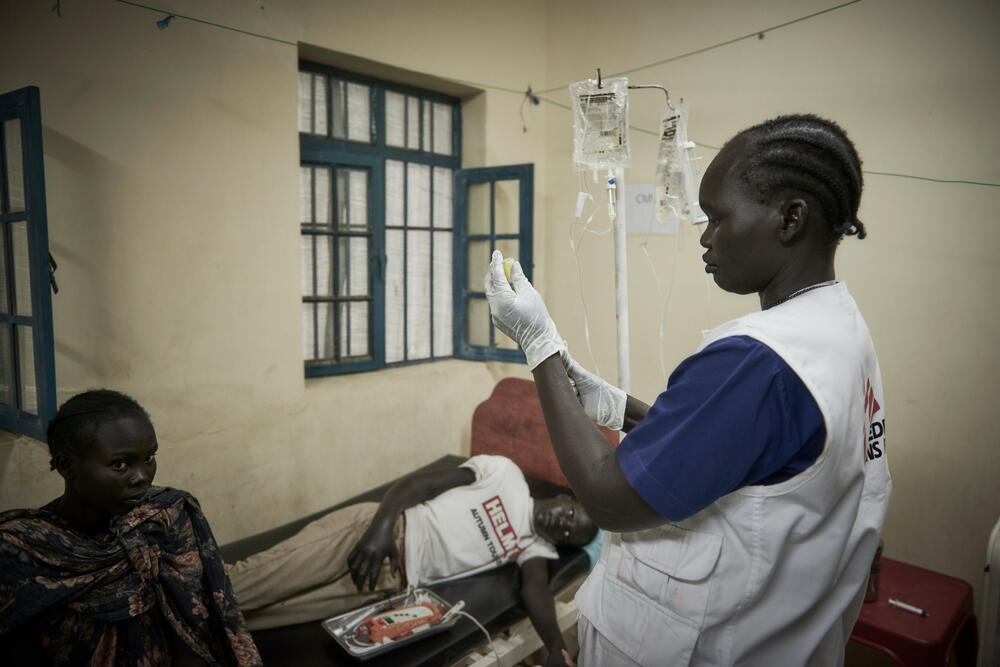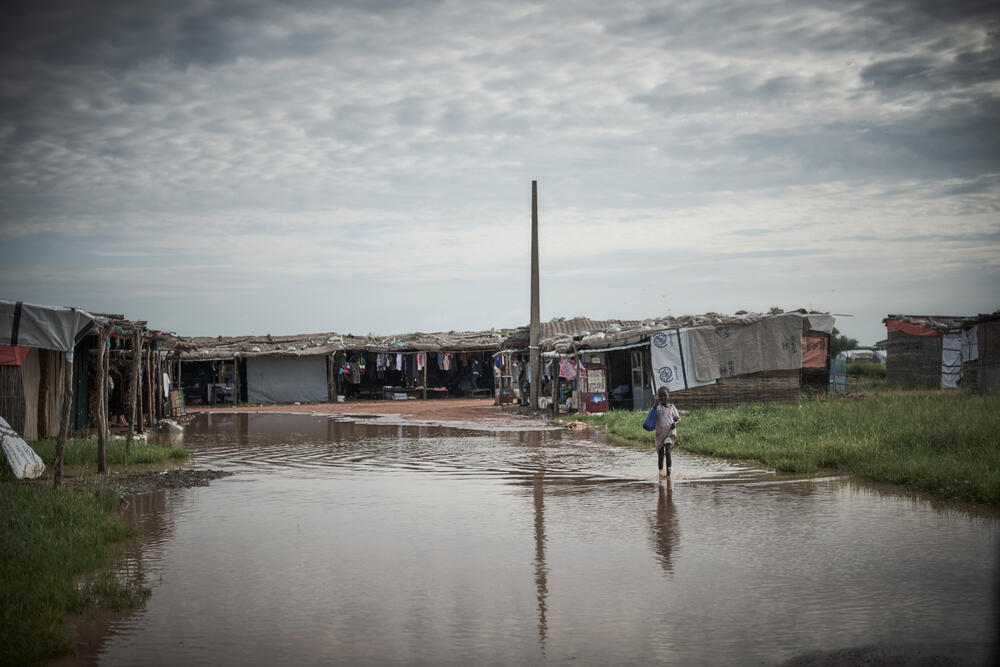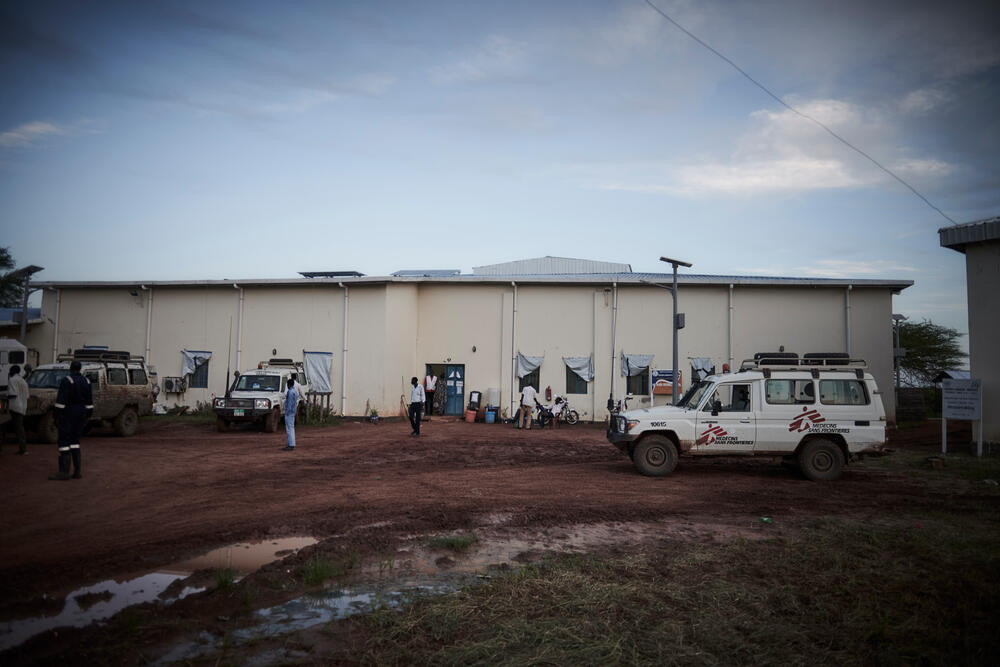Snakebite: How MSF are using AI to identify bites, and the story of a survivor turned ambassador
30 January 2024
Snakebite is a hidden crisis that affects over 2.7 million people per year. Recognised as a neglected tropical disease (NTD), it results in over 100,000 deaths annually, while more than 400,000 people per year will require amputation, or be left permanently disabled as a result of snakebite. Identifying snakebites as quickly as possible could be a lifesaver for communities around the world.
In a pilot project designed by MSF and the University of Geneva (UNIGE), Artificial Intelligence animal recognition software will help MSF teams who are not snake specialists to distinguish venomous snakes from common snakes and to improve antivenom to treat the patients. Watch this video to find out more about the project, and read on for the story of a snakebite survivor in South Sudan.
Read the full story of a South Sudanese snakebite survivor below:
Deng is a 45-year-old farmer living in a remote village. Deng has a wife and four children: one girl and three boys. He likes to see his children healthy and happy.
He lives in a village that does not have any clinic or healthcare. Or any services. The only activities here are fishing and farming. In his village there is a river and two swamps, so he is surrounded by water. Because of this, he feels worried about the rainy season. The two rivers that surround him might flood if the rains are heavy and this will make it difficult for him and his family to live because the farming land will be covered and not useable. Also, there is the issue of snakes. They come in big numbers during the rainy season.
The rains come one day in June, and he knows they will keep coming for the next four months. The grass starts to grow tall; the road disappears under the water. The whole village starts to feel worried because if anything happens, they will not be able to move and get help.
One night, after Deng finishes farming, he is sitting in his compound talking with his family as a snake quietly slithers into the compound. But Deng and his family do not see it – they are getting ready to go to bed.
Deng’s son, Chol, is going to his bed in the dark, but the snake is hiding under his mat. Chol does not see the snake, so when he goes to lie down, the snake jumps out and bites him.
Deng immediately rushes in and kills the snake, then using a razor blade, he cuts the bite area because he has heard this can heal his son right away and get the snake’s venom out. Chol is crying and he starts to see the bite, with its two holes, swelling. It’s painful which makes him scared. He feels like he will not heal and will not be able to walk.
After four days, there is no improvement. Deng shares this with the neighbours and one of them advises Deng to take the child to the hospital. Youths from the village get together and help to carry him to the main road where he can get transport. They spend four hours waiting for a car to take them from their village to the hospital which costs them money.
They arrive at the MSF hospital where Deng is met by a doctor who assesses his son and hears the story of what happened with the snake, as well as about traditional medicine. However, Chol will need extensive treatment and is admitted to hospital.
Chol spends the next three weeks in hospital and undergoes multiple surgeries and treatments for the snake bite. Deng realises his son is improving and gets very excited. He is so grateful to the doctor – “If I would have delayed more, my son would not have been okay.”
Eventually, Chol is discharged and the doctor advises them to come to the hospital for a follow-up in one week. They go home with medicines and finish the treatment, then come back after the week to make sure the medication has worked properly. This is an important step because they had delayed coming to the hospital in the first place, so the doctor needs to make sure that everything is healing well.
Deng is very happy – the medicine worked and Chol is cured. When Deng finally arrives back home he starts to thank the whole community for their support and help to carry his son. Excited, he starts to share information with the community that it is important to go to the hospital for all snake bite treatments.
Now, the family is happy and healthy, they have become advocates for snakebite prevention and care. Meanwhile, Chol, who was bitten by the snake, is a messenger who speaks to communities and advises the people who are living in his village.
Community members are reminded that when the rainy season starts and the grass grows tall you should clear the grasses around your environment and also wear gumboots to protect you from snake bites and avoid sleeping on the ground.
Snake bites can be deadly and the nearest healthcare facility is not always in a reachable distance and transport may not be available. The patient may need to be carried to the hospital as soon as possible.
Now, the community in the village have the message, and if a snake bites a person then the community leaders can call on the youths around the village to carry the patient if he or she cannot walk on foot to reach the hospital in the area.
Deng shares with community leaders, women and the youth how happy he is because there is care for snake bite patients in the area.




